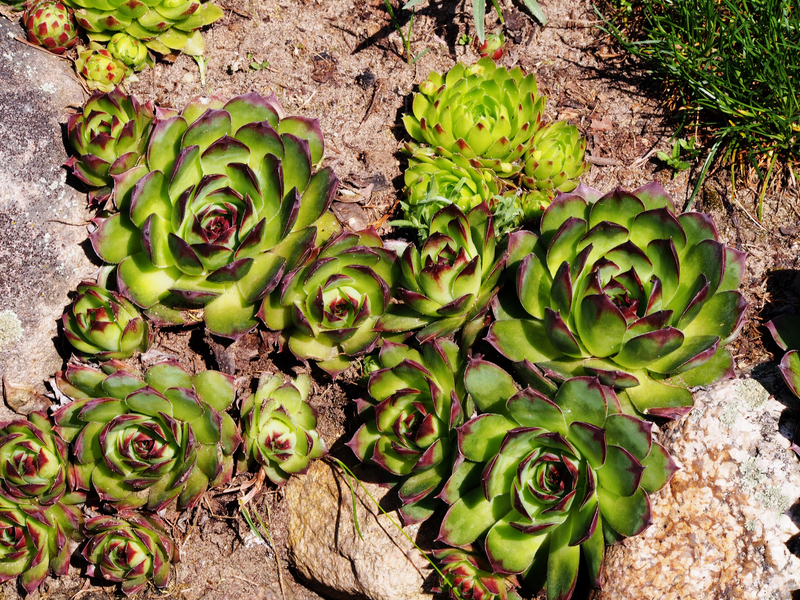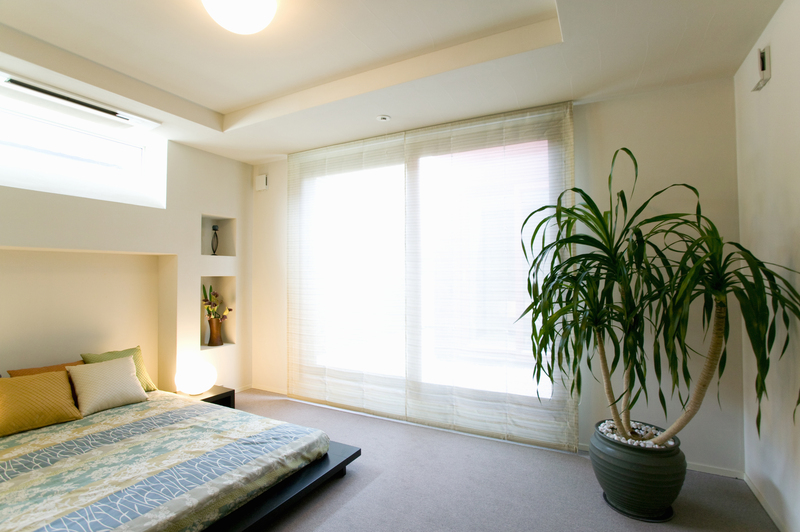Embrace sustainable living by starting a herb garden
Posted on 14/08/2025
Embrace Sustainable Living by Starting a Herb Garden
In a world where environmental consciousness and personal well-being are gaining priority, choosing to embrace sustainable living by starting a herb garden is a practical and rewarding decision. Whether you have a sprawling backyard, a modest balcony, or even just a collection of sunny window sills, cultivating your own herbs can significantly reduce your carbon footprint, promote eco-friendly practices, and enrich your diet and lifestyle. Discover the countless reasons why growing your own herbs is an essential step toward living more sustainably.
Why Choose a Herb Garden for Sustainable Living?
Embracing eco-friendly living means making conscious choices every step of the way. Starting a DIY herb garden is one of the easiest and most impactful actions you can take. Here's why growing herbs at home promotes a sustainable lifestyle:
- Reduces food miles: Fresh herbs no longer need to be shipped from faraway locations--grow them right at home!
- Decreases packaging waste: Herbs from stores often come in plastic packaging. Homegrown herbs are zero-waste.
- Minimizes chemical use: You control what goes into your garden, eliminating harmful pesticides and synthetic fertilizers.
- Promotes biodiversity: Herb gardens attract pollinators like bees and butterflies, enriching your local ecosystem.
- Encourages water conservation: Herbs often require less water compared to lawns or ornamental plants.
By choosing to start a sustainable herb garden, you take an important step in reducing your environmental impact while enjoying a fresh, continuous supply of flavorful greens.

Getting Started: Planning Your Sustainable Herb Garden
You don't need to be a master gardener or own acres of land. In fact, herb gardening is one of the most accessible sustainable practices for anyone. Here's how to get started:
1. Choose the Right Location
Herbs love sunlight, so pick a spot that gets at least 4-6 hours of direct sun daily. This could be:
- Your backyard or front garden
- A sunny windowsill in your kitchen
- Balcony or terrace (perfect for urban dwellers)
- Vertical garden using wall planters or hanging pots
2. Select Your Herbs
Start with easy-to-grow herbs that suit your climate and personal tastes. Popular choices for a home herb garden include:
- Basil
- Mint
- Rosemary
- Oregano
- Parsley
- Thyme
- Cilantro (Coriander)
- Sage
- Chives
Tip: Start with 3-5 varieties to avoid overwhelm. As you gain experience, expand your collection.
3. Opt for Organic and Heirloom Seeds
To maximize sustainability, select organic, non-GMO, or heirloom seeds and seedlings. These varieties are often hardier and contribute to preserving plant biodiversity.
4. Use Sustainable Gardening Materials
- Choose biodegradable pots or recycled containers
- Use peat-free organic soil to protect peatlands
- Mulch with straw, leaves, or compost for moisture retention
- Set up a rain barrel for water conservation
How to Plant and Care for Your Home Herb Garden
Planting Your Herbs
- Sow seeds directly in pots or beds, following packet instructions.
- Transplant seedlings after the last frost (outdoors) or keep them inside year-round.
- Provide adequate spacing--herbs need good air circulation.
- Label your herbs for easy identification.
Maintaining a Sustainable Herb Garden
Watering: Herbs thrive with moderate watering. Check soil moisture before watering and avoid overwatering to conserve H2O.
Feeding: Use homemade compost or organic fertilizer. Avoid synthetic chemicals for a healthier, eco-friendly garden.
Pruning: Regularly trim herbs to encourage bushy growth. Removing flowers can prolong leaf production.
Pest Control: Introduce beneficial insects like ladybugs. Neem oil and soapy sprays can control pests naturally.
Creative Ideas for Sustainable Herb Gardening
1. Vertical and Companion Planting
Limited on space? Go vertical! Use pallet planters, stackable pots, or hanging baskets. Mix herbs with companion plants or vegetables to create a mini-ecosystem.
2. Upcycling Containers
Repurpose old cans, teapots, or glass jars. It's an eco-smart way to garden while reducing landfill waste.
3. Community and Shared Herb Gardens
Don't have space at home? Join a community garden or organize a shared herb plot with neighbors. Collective gardening fosters a sense of community, shares resources, and increases biodiversity.
The Environmental Impact of Growing Your Own Herbs
When you embrace sustainable living with an organic herb garden, you reduce your household's reliance on commercially grown herbs. These often involve significant transportation, energy, and chemical inputs. Homegrown herbs have a limited carbon footprint, especially when watered with collected rainwater or greywater and grown in compost-rich soil.
Conservation of Resources
- Growing herbs at home saves gallons of water compared to industrial agriculture, especially when mulching and drip irrigation methods are used.
- Growing seasonally and locally reduces energy expenditure associated with heated greenhouses and global transport.
Biodiversity Boost
- Herb gardens attract beneficial insects and pollinators, creating a haven for wildlife.
- Rotating and mixing herbs can even enhance soil health, reducing the need for synthetic fertilizers.
Herb Gardening for a Healthier Lifestyle
The benefits of establishing a green, sustainable herb garden go far beyond the environment. Here's how they transform your personal well-being:
- Increased nutrition: Fresh herbs are packed with vitamins, minerals, and antioxidants.
- Flavorful, healthy meals: Add taste without extra salt, sugar, or unhealthy fats.
- Home remedies: Many herbs have medicinal properties. Mint soothes digestion; rosemary can boost focus; basil has anti-inflammatory qualities.
- Mindful living: Gardening reduces stress and brings you closer to nature and the food you eat.
Harvesting, Storing, and Using Your Homegrown Herbs
How and When to Harvest
- Pick leaves in the morning after dew dries, when oils are most concentrated.
- Harvest regularly to encourage more growth.
- For woody herbs (rosemary, sage), trim just above a set of leaves.
Storing and Preserving Herbs
- Drying: Air dry in bunches or use a dehydrator for long-term storage.
- Freezing: Chop and freeze herbs in ice cube trays with olive oil or water.
- Infusing: Make herbal vinegars or oils for culinary use.
Creative Uses for Your Herbs
- Culinary: Transform ordinary meals--think pesto, herbal teas, infused oils, and more.
- Natural cleaning: Use rosemary or thyme in homemade cleaning solutions for their antimicrobial properties.
- Medicinal and beauty: Make herbal balms, tinctures, or skin soaks for natural wellness.
Troubleshooting Common Herb Gardening Issues
Even seasoned gardeners face occasional challenges. Here's how to resolve the most common herb gardening issues sustainably:
- Leggy growth: Ensure your herbs get sufficient sunlight and trim them regularly.
- Yellowing leaves: May indicate overwatering or poor drainage. Adjust watering habits and use well-draining soil.
- Pest infestations: Handpick visible pests or use safe, natural remedies such as neem oil or insecticidal soap.
Inspiring Stories: Real-Life Sustainability from Herb Gardeners
Meet Lucy, an urban gardener who transformed her apartment balcony into a lush eco-friendly herb haven. By using recycled containers, organic soil, and homemade compost, Lucy not only cut down on grocery waste but inspired her neighbors to start their own mini herb patches.
After just one season, Lucy saved money, discovered new recipes, and built a community of like-minded, sustainability-driven friends. Her story is just one of many--proof that any effort, big or small, can create a ripple effect toward a greener future.

Frequently Asked Questions about Sustainable Herb Gardens
- Q: Can herb gardens grow indoors?
A: Absolutely! Use sunny windowsills, grow lights, or hydroponic setups for year-round indoor herbs. - Q: Do herbs need a lot of water?
A: Most herbs prefer slightly dry conditions. Always check soil moisture before watering. - Q: Will a herb garden attract pests?
A: Herbs grown with proper care are typically resilient. Companion planting and beneficial insects can minimize pest issues. - Q: Is it cheaper to grow your own herbs?
A: Yes! After initial setup, homegrown herbs cost pennies compared to store-bought options.
Conclusion: Make a Lasting Impact--One Herb at a Time
To embrace sustainable living by starting a herb garden is to make a conscious, empowering choice for your health and the environment. Whether you're motivated by reducing waste, conserving resources, or enjoying fresher food, a home herb garden is an accessible and effective way to live greener.
Start small, nurture your plants, and watch your sustainable journey flourish--one leaf, one meal, and one inspired neighbor at a time.
Ready to take the first step toward a more sustainable life? Begin your own herb garden today and savor the difference!



